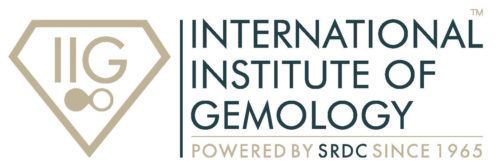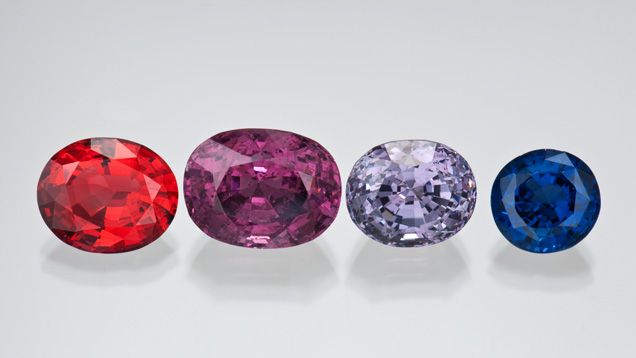|
Getting your Trinity Audio player ready...
|
Spinel is one of the three birthstones of August together with bright green, Peridot, and the oldest birthstone for August, Sardonyx. Spinel is one of the rare gemstones which come in a wealth of colors, from intense red to bluish-green. Spinel is often been mistaken for other gemstones, Ruby being the most common. It is the fourth most durable gemstone with Hardness 8 Mohs just behind Diamond. Ruby, and Sapphire.
SPINEL HISTORY AND LORE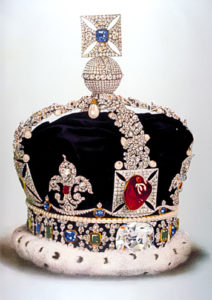
Spinel is a gemstone that was confused with Ruby and Sapphire for over 1000 years as they have a similar color and they are often found in the same mines. Many famous old “Ruby” was finally discovered to be in fact Red Spinel. However, fine Red Spinel is rarer than Ruby in equal color, this gemstone is actually undervalued.
It has often been mistaken for other gemstones, Ruby being the most common. History’s most famous example of the misidentification is the 170ct Black Prince “ruby” set in Great Britain’s Imperial State Crown, just above the 317.40ct Cullinan II diamond. It is actually an intense red Spinel, not a Ruby.
SPINEL ORIGIN AND FORMATION
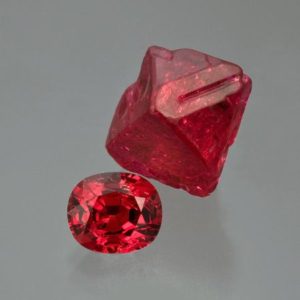
Spinels are formed under immense pressure and intense heat under the earth’s surface for millions of years. Moreover, they are usually found in the same areas where rubies and sapphires are usually found, which also explains why they are often confused with each other.
Spinels consist of magnesium, aluminum, and oxygen atoms that turn into liquid when hot magma emerges from below the earth’s surface and seep into cracks in igneous or metamorphic rocks. When the liquid cools it turns into colorless crystals. However, this rarely happens in nature as magnesium aluminum oxide mixes with impurities and gets different colors.
It is worth mentioning that spinel is most commonly mined as an alluvial deposit. This means that before being discovered and collected, spinel has been eroded from the primary deposits or rocks in which it formed.
Origin countries for Spinels are India, Pakistan, Afghanistan, Myanmar (Burma), Sri Lanka, Russia, Tanzania, and Vietnam.
SPINEL COLOR

Spinel comes in a wealth of colors, from intense red to bluish-green. The most valuable and desirable Spinel color is “Ruby-like” red, though blue, yellow, orange, pink, and purple colors also make fine gemstones. Spinel is often fluorescent in UV light, and this can be helpful in its identification.
The wide color range of spinels is the result of impurities or minuscule traces of other minerals mix added during the formation or growth process. If the microelement is chromium then the spinel turns red, pink, or orange. If it is the iron, spinels will turn to a deep red color, whereas Blue, purple, violet, lilac, grey, and black spinels are caused by various combinations of manganese and cobalt microelements. Yellow and green spinel is extremely rare in nature.
The most sought after color in spinels is red which is sometimes referred to as “Ruby Red”. Also, naturally occurred cobalt blue is probably the most sought after spinel color among all the blue gemstones after sapphire. Do you heard about the Neon pink spinels from Tanzania, Mahenge region are also one of the most demanded gemstones due to their amazing natural color. The color-changing phenomenon can also be seen in spinels.
Trade Names of Spinel as per colors
Red Spinel – Ruby Colored Spinel / Ruby Spinel
Purple Spinel – Almardine Spinel
Pink Spinel – Rose Spinel
Orange Spinel – Flame Spinel
Blue Spinel – Sapphire Spinel
Alexandrite Spinel – Color changing Spinel
Black Spinel – Opaque Spinel
SPINEL CLARITY AND CUT
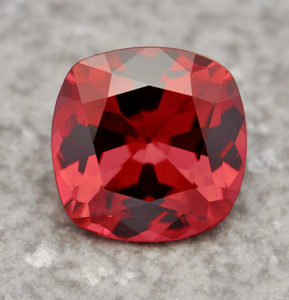
Mostly rough natural spinels are very transparent which allows seeing any internal blemishes and inclusions so the clearer the gem the better. However, distinctive fingerprint-like inclusions may add to the gemstone’s beauty. Spinels can be either transparent, translucent, or opaque. Since spinel is quite a rare and valuable gemstone it can often be cut into a non-standard shape and size to maximise the rough yield.
Since spinel is a durable gemstone (8 on the Mohs scale) it can be cut and faceted into almost any shape but cutters need to take special care to enhance the brilliance and maximize scintillation.
SPINEL PRICES

The price of natural spinels is determined by their color, clarity, cut, and carat, weight.
Deep red and cobalt blue spinels fetch the highest prices for spinel among all other colors. Pink, violet, orange, grey and black varieties can be found at much more reasonable prices.
In general, spinels are Type 1 color stone, which does not have inclusions or flaws visible to the naked eye and is more valuable than those with obvious impurities. Although, the gems with star effect which is caused by inclusions can be rather attractive.
Large spinels that is, stones of good color in sizes over ten carats are rare indeed. The fine red specimen of Spinel is a museum article or collectors gem and must feel happy to display the same, even if it weighs little less than ten carats. In this regard, it is more fortunate than ruby, since very few ten-carat rubies are on display. In spite of the rarity of large sizes, the price per carat does not increase as rapidly for the larger sizes as it does for ruby or diamond, although large red spinels may be very desirable and beautiful. The size makes very little difference in price per carat in the colors other than red, orange, and pink.
